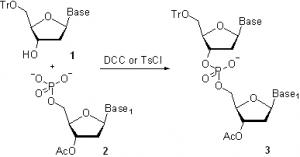
Oligonucleotides are being used for therapeutic purposes.
Revolutionary advancements in science have given scientists and researchers the ability to utilize oligonucleotides as a therapeutic agent. This breakthrough, which is also approved by the Food and Drug Administration, continues to make strides in providing a backbone for further positive clinical trials.
Upon approval from the FDA, the first antisense oligonucleotide was commercialized and released to the public. This antiviral drug, known as Vitravene, benefits immunocompromised patients with cytomegalovirus retinitis and has been circulated to countries all over the world.
Over the years, researchers have been searching for a way to express the oligo synthesis process as an alternative form of treatment. Through various experimental phases and therapeutic trials, antisense oligonucleotides were adapted into an effective design and therefore became an efficient target deliverer.
The past 2 decades have been proof that antisense oligonucleotide technology plays a vital and emerging role in the selective modulation of gene expression. With the potential for new therapeutic compounds to surface at a high rate, clinical trials have been substantially increased to further generate positive outcomes. Active steps have been taken, and so far, they have been greatly encouraging.
This is just the beginning for antisense oligonucleotide technology. The number of clinical trials has increased dramatically over the years and will only continue to grow. Although this form of technology is not perfect as a resolution of specific problems still need to be addressed in terms of chemistries like dna synthesis and such, the potential for another breakthrough in therapeutic efficacy is bound to occur and could possibly bring a worldwide change.
The Midland Reagent Company has modified oligos for RNA synthesis. Their reliability and quality make them a popular option for laboratories all over the world.





